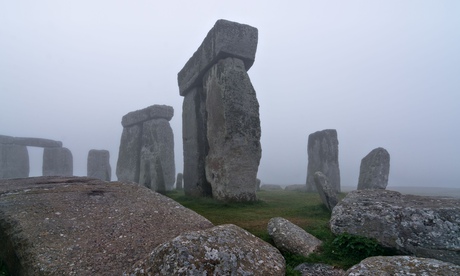- Stonehenge researchers on Salisbury Plain discover site is much larger than ever thought.
- Researchers find series of hidden chapels, burial mounds [like Scythian Buddhist stupas], and ritual shrines, transforming view of historic area.
- It's getting to be almost as amazing as Turkey's 12,000-year-old Gobekli Tepe (history's first temple) and Buddhist Afghanistan's Mes Aynak
Stonehenge stood at the heart of a sprawling landscape of chapels, burial mounds, massive pits and ritual shrines, according to an unprecedented survey of the ancient grounds.
Researchers uncovered 17 new chapels and hundreds of archaeological features around the neolithic standing stones on Salisbury Plain, Wiltshire, including forms of monuments that have never been seen before.
Brought together for the first time in a digital map of the historic site, the discoveries transform how archaeologists view a landscape that was reshaped by generations for hundreds of years after the first stones were erected around 3100 BC.
"This radically changes our view of Stonehenge," said
Vince Gaffney, head of the Stonehenge Hidden Landscapes Project at Birmingham University. "In the past we had this idea that Stonehenge was standing in splendid isolation, but it wasn't...it's absolutely huge."
More
 |
| Stonehenge, a Druid, Pagan, Wiccan site in England (Geert Verhoeven/University of Bi/PA) |
.
Underneath Stonehenge, "A map of what was there in the past"
There's much more to Stonehenge, it turns out, than meets the eye (or, for that matter,
Spinal Tap).
Researchers from Birmingham University used high-tech equipment to map 17 ritual monuments in the area. That's in addition to the iconic circle of stones that have stood there for thousands of years.
Professor Vincent Gaffney, the project leader,
tells NPR's Robert Siegel that researchers found a large amount of new archaeological sites dating to the period of
Stonehenge, as well as later and earlier periods. They were, he said, small "henge-like" monuments like Stonehenge, "but perhaps better interpreted as small chapels."
And what stands underneath the World Heritage Site that attracts more than 1 million visitors annually is more numerous than what we can see.
"The results," Prof. Gaffney said, "actually look like a map of what was there in the past."
A statement from the Birmingham University said: "Work also revealed novel types of monument including massive prehistoric pits, some of which appear to form astronomic alignments, plus new information on hundreds of burial mounds, Bronze Age, Iron Age and Roman settlements and fields at a level of detail never previously seen."
The project was a collaboration between the university and the Ludwig Boltzmann Institute for Archaeological Prospection and Virtual Archaeology.
Archaeologists think that Stonehenge, about 80 miles southwest of London, was built between 3000 B.C. and 1600 B.C. It is believed to be a temple, but who it was built by and who it was dedicated to is unclear. The new, underground discoveries are only likely to add to the mystery.



























































































































































































































































No comments:
Post a Comment